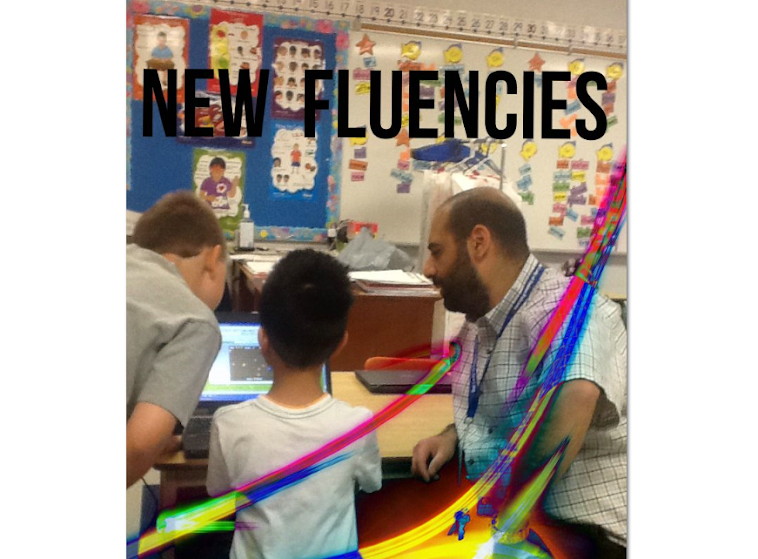My students are just wrapping up a blended learning unit on Traditions and Celebrations in Social Studies. The application portion of the unit, which was also the culminating task, was to invent their own celebration that included the characteristics of celebrations (name, food, decorations, and traditions) that we talked about during the unit.
Here is the learning goal and the success criteria for the unit:
 |
| Learning Goal and Success Criteria for our Social Studies work. |
In this unit the students used two OERB interactive lesson/activities and learned how to use Google Presentation in order to work on their created celebration.
The unit started with a diagnostic activity in order to find out what they know about traditions and celebrations. They used a graphic organizer to write/draw what they know about about the topic. Their work was assessed by looking over their graphic organizer to determine whether their knowledge was accurate or not. Generally speaking, the students were not accurate in their understanding of what traditions and celebrations are.
We then formally defined what traditions and celebrations are. The students then made a connection to a common tradition/celebration that is common to their family. The students were were given the opportunity to make their connection by talking about it, writing about it, drawing it, and/or acting it out. The students were assessed by conferencing with them and determining whether the tradition and celebration meets matches with the formal definition that was introduced to them.
.JPG) |
| Anchor chart that defines traditions and celebrations. |
At this point we discussed the common features of celebrations (e.g. birthday parties) like food, decorations, and specific things that are done at celebrations (traditions). Students were informed that they should pay close attention to these common features because they would come up again in the application portion of this unit. Students were assigned a task to do at home with their parents - to talk about and record information about their favourite family celebration and the food, decorations, and traditions that are part of this particular celebration. This activity would also provide them with a preview of what they will be doing on their own at the end of the unit.
.JPG) |
| Birthday celebration anchor chart. |
The students were expected to orally present their homework to their classmates. This would provide them with great practice for the oral presentation of their invented celebration at the end of the unit.
.JPG) |
| Oral presentation anchor chart. |
The students homework was looked over to ensure that all sections of the organizer were complete and they were given feedback on what they did well and what they need to work on with respect to their oral presentation.
Having explored traditions and celebrations within their household, we shifted gears and started looking at the traditions/celebrations of culturally diverse groups. Students logged into our LMS page and engaged in an OERB lesson activity called "Traditions and Celebrations" (ELO1301470). In this activity the students learned about Diwali and Chinese New Year.
 |
| "Traditions & Celebrations" interactive lesson/activity. |
The students used a Venn diagram to compare similarities and differences of the two celebrations/traditions.
.JPG) |
Anchor chart created to remind students to use proper terminology - Venn Diagram was completed after the students completed the interactive OERB work.
As the students were working on the Venn diagram activity I informally assessed their work/understanding by moving around the room and asking question about the similarities and differences between the Chinese and Hindu celebrations. I also examined their Venn Diagrams to ensure that they were on the right track.
After that activity the students engaged with another OERB lesson/activity. They explored some of the holidays celebrated in Canada by Canadians of various cultural and ethnic backgrounds. "Celebrations in Canada" (ELO1415420) allowed the students to explore Kwanzaa, Chinese New Year, and Canada Day in an in-depth fashion.
When the students completed the learning activity they made a text to self/text to world connection (e.g. what did the celebrations in the learning activity remind you of?). I briefly conferenced with each student to get an idea of the connection they were able to make to the new learning. The graphic organizers they used to record their connections were reviewed shortly after the students completed their work.
At this point the students were ready to engage in the final task of the unit - invent their own celebration. We reviewed the anchor charts created during this unit and the students were told that they would get to create their own celebration based on the characteristics of celebrations that they learned about throughout the unit. The students were also informed that they would be presenting their work. We reviewed what was explicitly taught about what they need to do in order to provide an effective oral presentation.
Once the students completed their work using paper and pencil they were introduced to Google Presentation as I modelled how to use the application by creating my own invented celebration. The students were reminded of the criteria and were encouraged to use their draft (paper copy of their invented celebration) to guide them in creating their digital slide. Here is the presentation they created:
Please do check it out and let us know what you think!
|
If you have any questions/comments, please feel free to reach me here by leaving a comment, via email at rtwcdsb@gmail.com, on Twitter @rchids, and/or on Google+.

.JPG)
.JPG)
.JPG)


.JPG)


No comments:
Post a Comment